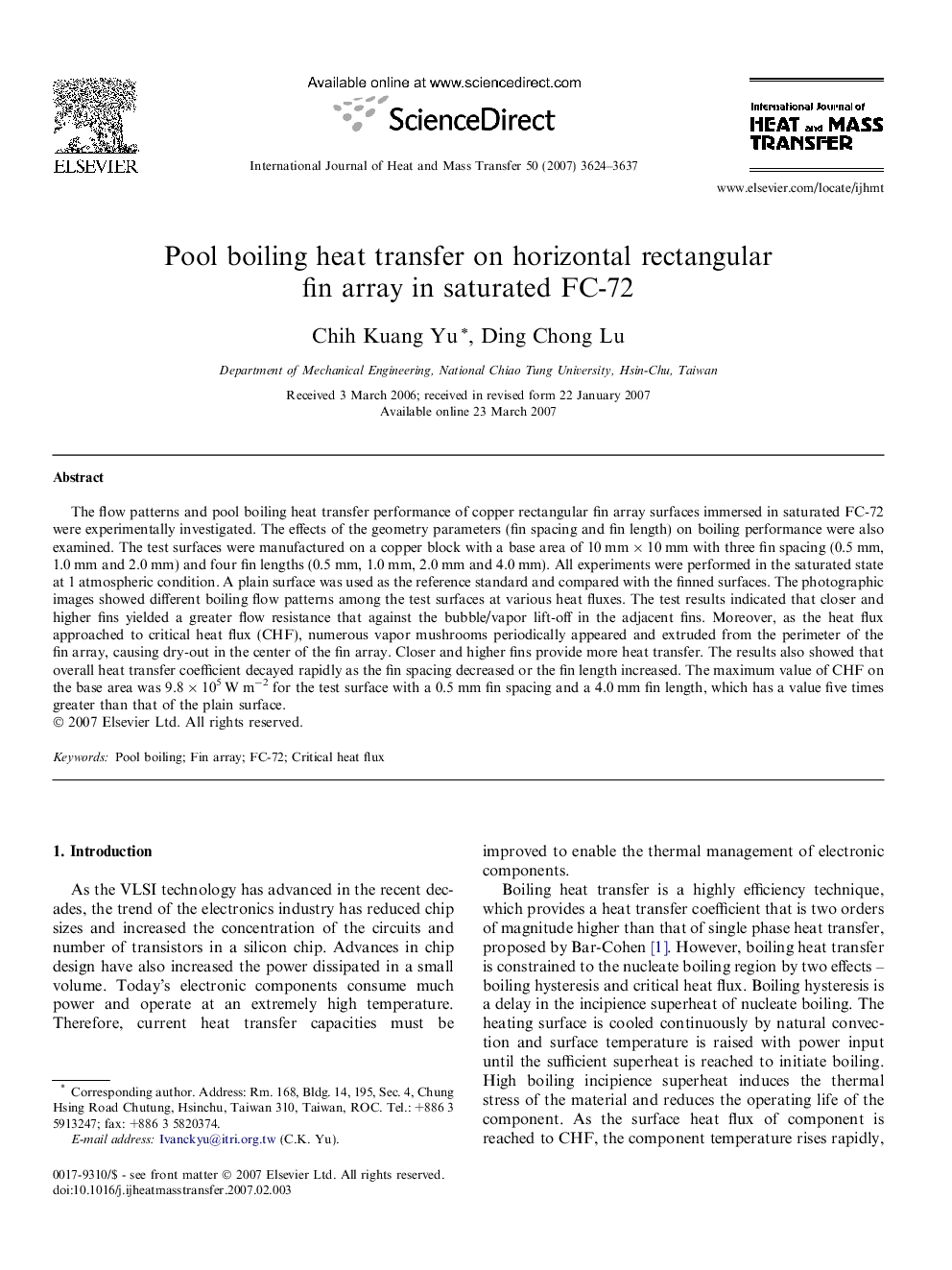| Article ID | Journal | Published Year | Pages | File Type |
|---|---|---|---|---|
| 661284 | International Journal of Heat and Mass Transfer | 2007 | 14 Pages |
Abstract
The flow patterns and pool boiling heat transfer performance of copper rectangular fin array surfaces immersed in saturated FC-72 were experimentally investigated. The effects of the geometry parameters (fin spacing and fin length) on boiling performance were also examined. The test surfaces were manufactured on a copper block with a base area of 10 mm Ã 10 mm with three fin spacing (0.5 mm, 1.0 mm and 2.0 mm) and four fin lengths (0.5 mm, 1.0 mm, 2.0 mm and 4.0 mm). All experiments were performed in the saturated state at 1 atmospheric condition. A plain surface was used as the reference standard and compared with the finned surfaces. The photographic images showed different boiling flow patterns among the test surfaces at various heat fluxes. The test results indicated that closer and higher fins yielded a greater flow resistance that against the bubble/vapor lift-off in the adjacent fins. Moreover, as the heat flux approached to critical heat flux (CHF), numerous vapor mushrooms periodically appeared and extruded from the perimeter of the fin array, causing dry-out in the center of the fin array. Closer and higher fins provide more heat transfer. The results also showed that overall heat transfer coefficient decayed rapidly as the fin spacing decreased or the fin length increased. The maximum value of CHF on the base area was 9.8 Ã 105 W mâ2 for the test surface with a 0.5 mm fin spacing and a 4.0 mm fin length, which has a value five times greater than that of the plain surface.
Related Topics
Physical Sciences and Engineering
Chemical Engineering
Fluid Flow and Transfer Processes
Authors
Chih Kuang Yu, Ding Chong Lu,
